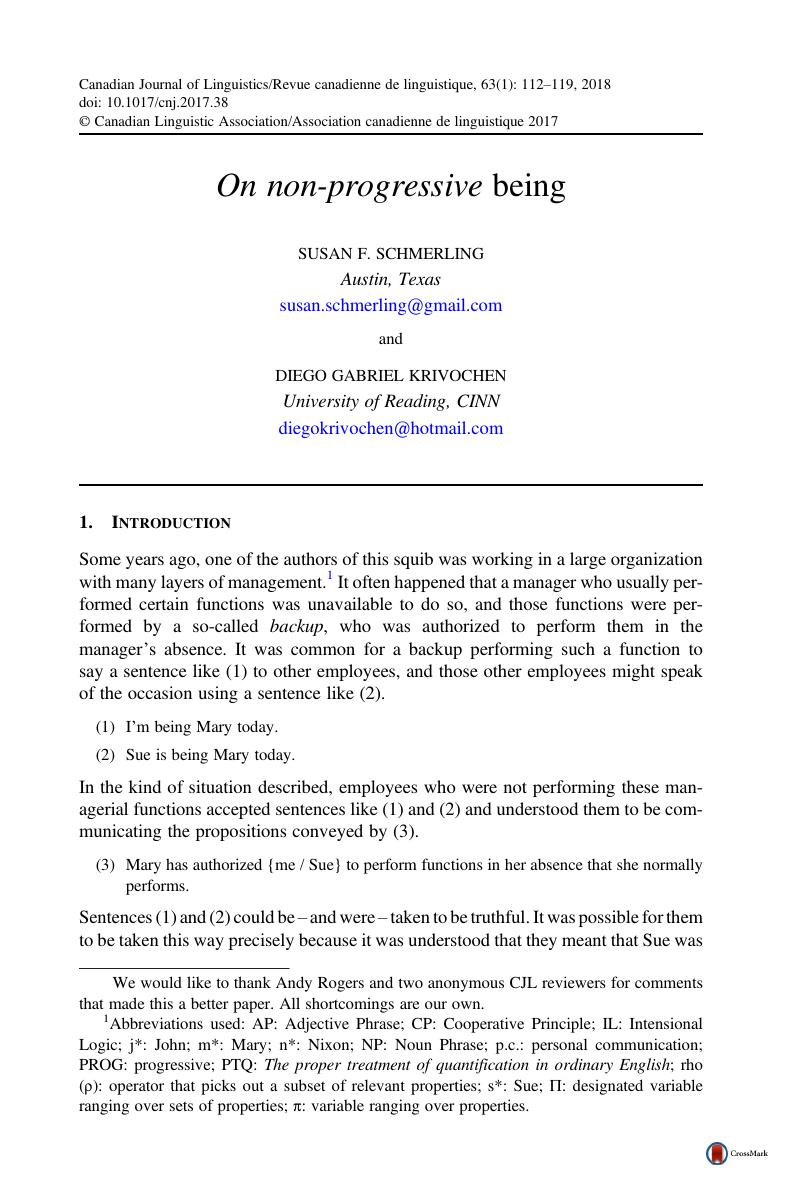No CrossRef data available.
Article contents
On non-progressive being
Published online by Cambridge University Press: 11 July 2017
Abstract
An abstract is not available for this content so a preview has been provided. Please use the Get access link above for information on how to access this content.

- Type
- Squibs/Notules
- Information
- Canadian Journal of Linguistics/Revue canadienne de linguistique , Volume 63 , Issue 1 , March 2018 , pp. 112 - 119
- Copyright
- © Canadian Linguistic Association/Association canadienne de linguistique 2017
Footnotes
We would like to thank Andy Rogers and two anonymous CJL reviewers for comments that made this a better paper. All shortcomings are our own.
References
Grice, H. Paul. 1975. Logic and conversation. In Syntax and semantics, volume 3: Speech acts, ed. Cole, Peter and Morgan, Jerry L., 41–58. New York: Academic Press.Google Scholar
Montague, Richard. 1973. The proper treatment of quantification in ordinary English. In Approaches to natural language, ed. Moravcsik, Julius, Suppes, Patrick, and Hintikka, Jaakko, 221–242. Dordrecht: Reidel.Google Scholar
Portner, Paul. 2011. Perfect and progressive. In Semantics: An international handbook of natural language meaning, ed. Maienborn, Claudia, von Heusinger, Klaus, and Portner, Paul, 1217–1262. Berlin: De Gruyter Mouton.Google Scholar


